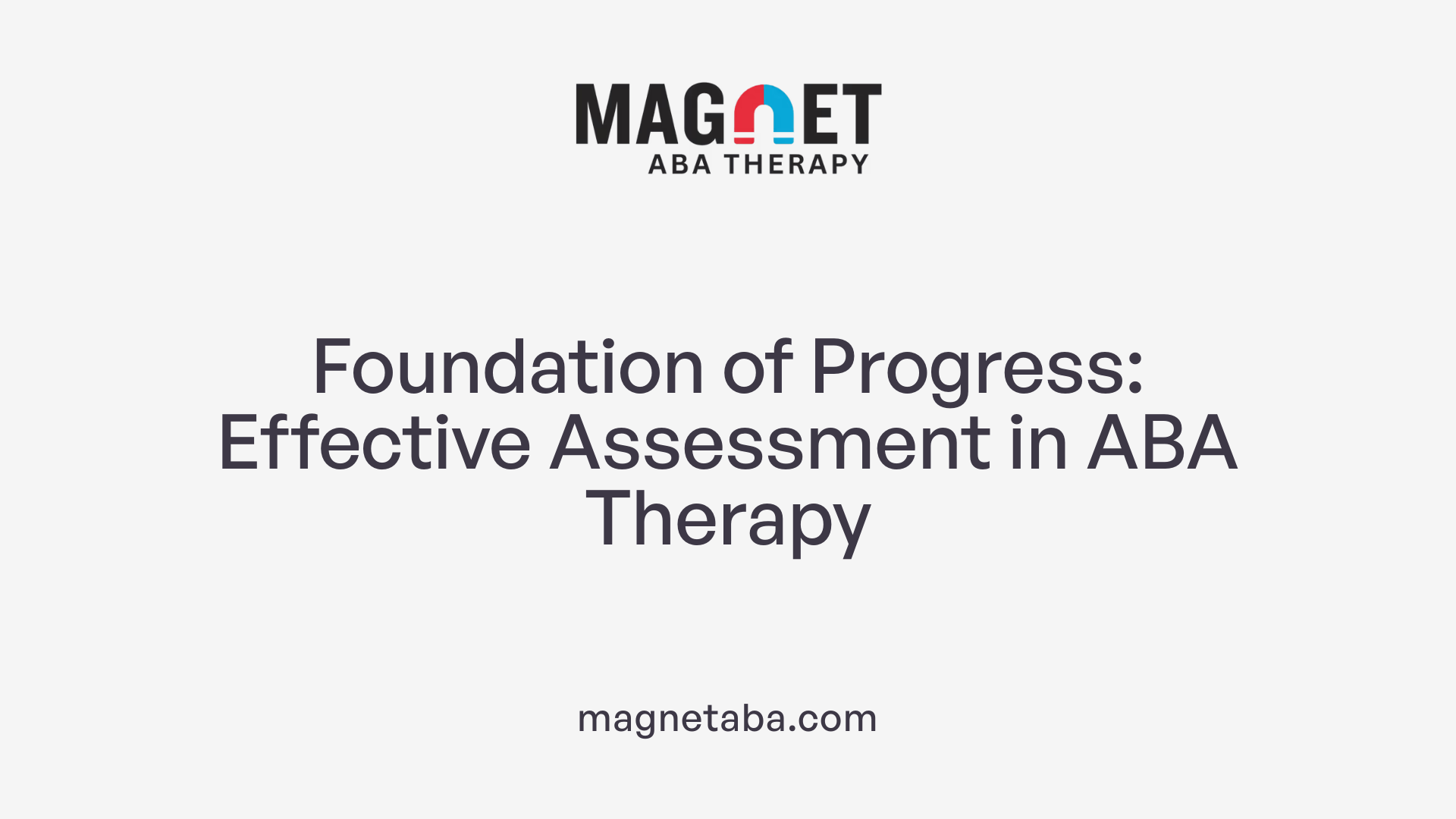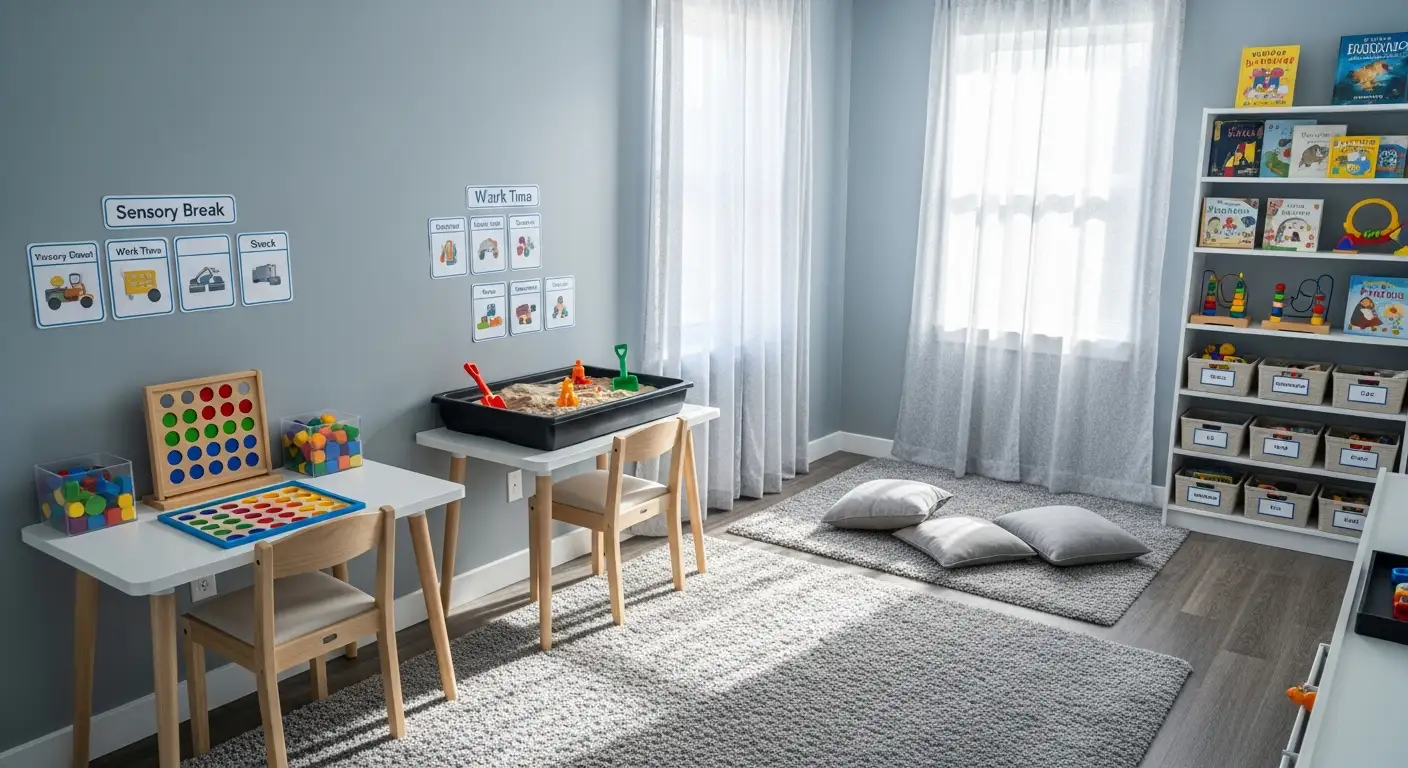Understanding the Foundation of ABA Therapy Goals
Applied Behavior Analysis (ABA) therapy is a cornerstone treatment for individuals with autism, focusing on improving communication, social, behavioral, and daily living skills. Establishing realistic and structured therapy goals is essential to guide progress, maintain motivation, and ultimately enhance quality of life. This article explores how to set these goals effectively, ensuring they are personalized and achievable for each individual.
What is Applied Behavior Analysis (ABA) Therapy and its Role in Autism Treatment?

Definition of ABA Therapy
Applied Behavior Analysis (ABA) therapy is a scientific method focused on understanding and modifying behavior through learning principles. It targets increasing positive behaviors such as communication, social interaction, and daily living skills, and aims to reduce problematic behaviors.
How ABA Helps Individuals with Autism
ABA supports individuals with autism by using structured approaches like positive reinforcement to encourage useful skills. Customized programs allow therapists to address each individual's unique strengths and challenges, working to improve independence and quality of life.
Techniques and Flexibility of ABA
Key ABA techniques include Discrete Trial Training (DTT) and Natural Environment Training (NET). The therapy is adaptable, ensuring goals and methods suit individual needs and contexts, which may range from home to school or community settings.
Settings and Individualized Programs
ABA therapy occurs in various environments and is tailored by trained professionals to an individual's current abilities and behaviors. This individualized focus helps ensure meaningful progress relevant to the person's daily life.
Evidence Supporting ABA Effectiveness
Research supports ABA as an effective approach for children with autism spectrum disorder (ASD), demonstrating significant improvements in communication, social skills, and independence when therapy is implemented early and intensively.
The Importance of Assessment in Setting Realistic ABA Therapy Goals

What is the Initial Assessment Process?
Assessment is the foundational step in setting meaningful goals in ABA therapy. It systematically evaluates a child's existing skills, behaviors, and challenges to establish a clear starting point.
What Tools Are Used in Assessment?
Several specialized tools support this process:
- Functional Behavior Assessment (FBA) helps identify reasons behind specific behaviors.
- Verbal Behavior Milestones Assessment and Placement Program (VB-MAPP) evaluates language and social skills.
- Assessment of Basic Language and Learning Skills-Revised (ABLLS-R) measures a broad set of skills including communication and academics.
- Assessment of Functional Living Skills (AFLS) focuses on practical daily living abilities.
Why Gather Input from Parents and Teachers?
Parents and teachers provide valuable observations across different environments. Their insights ensure the child's needs are fully understood and represented beyond clinical settings, enhancing goal relevance.
How Are Current Skills and Challenges Evaluated?
Through these tools and stakeholder input, therapists identify strengths and difficulties in communication, social interaction, behavior, and daily living skills. This comprehensive evaluation reveals areas requiring focus.
How Does Assessment Guide Goal Prioritization?
Assessment results enable prioritizing goals that have the most significant impact on the child's independence and quality of life. By targeting essential skills first, therapy becomes more efficient and tailored to individual needs.
This thoughtful assessment-driven approach ensures that ABA therapy goals are realistic, personalized, and geared toward measurable progress.
Applying the SMART Framework for Effective and Achievable Goal Setting

What Are SMART Goals in ABA Therapy?
SMART goals are a strategic way to set therapy objectives that are clear and reachable. SMART stands for Specific, Measurable, Achievable, Relevant, and Time-bound. This framework ensures goals in ABA therapy are precise and tailored to each child's unique needs, making progress easier to track and attain.
How Do Examples of SMART Goals Look in ABA?
For instance, a SMART goal could be for a child to "request help using words at least 5 times per day within one month." This goal is specific (requesting help verbally), measurable (five times a day), achievable (based on assessment), relevant (improves communication), and time-bound (one month).
Why Break Goals into Smaller Steps?
Large objectives are broken into manageable sub-goals to avoid overwhelming the child. This stepwise approach supports consistent, gradual progress by focusing on achievable targets within each therapy session.
Why Focus on Functional and Relevant Goals?
ABA goals should directly enhance the child's daily life and independence, addressing areas like communication, social skills, behavior, and self-care. Functional goals increase motivation by showing tangible improvements that impact everyday activities.
How to Prioritize Goals for Best Impact?
Prioritizing one or two goals based on their significance to daily functioning helps prevent overload and ensures meaningful development. Focusing on impactful skills promotes steady progress and builds confidence.
By applying the SMART framework alongside careful prioritization and goal breakdown, ABA therapy is better positioned to support children with autism in reaching their full potential and improving quality of life.
Strategies for Implementation and Monitoring Progress in ABA Therapy

How are ABA therapy goals implemented effectively?
ABA therapy employs structured teaching methods to help children with autism develop essential skills. Two commonly used techniques are Discrete Trial Training (DTT) and Natural Environment Training (NET). DTT focuses on teaching specific skills in a controlled setting through repeated trials and clear prompts. NET, on the other hand, uses natural, everyday situations to encourage learning, promoting generalization of skills beyond therapy sessions.
Positive reinforcement plays a crucial role in motivating children and strengthening desired behaviors. Rewards such as praise, tokens, or tangible items are used to encourage engagement and reinforce progress toward goals.
Why is data collection important in ABA therapy?
Tracking progress through systematic data collection allows therapists and parents to evaluate if the set goals are being met. By monitoring responses and behaviors, adjustments can be made to the therapy plan as needed to optimize outcomes.
How often should goals be evaluated and adjusted?
Regular re-evaluation of goals is essential to ensure they remain appropriate and sufficiently challenging. Since progress may not always be linear, ongoing assessment helps therapists adapt techniques and redefine objectives to suit the child's current abilities.
What is the importance of collaboration in the monitoring process?
Effective ABA therapy involves continuous collaboration among therapists, parents, and teachers. This team approach ensures consistency across settings, supports the child's progress, and enables shared decision-making for goal adjustments. Parents' active participation in tracking and reinforcing skills at home strengthens therapy success.
This collaborative, data-driven approach with well-chosen implementation strategies enhances motivation, measures progress accurately, and ensures that therapy goals remain achievable and relevant over time.
The Role of Families and Celebrating Milestones to Enhance Therapy Outcomes

Parental Involvement in Goal Setting and Progress Monitoring
Families play a vital role in ABA therapy by actively participating in setting goals and monitoring their child's progress. Their insights help therapists tailor objectives that are meaningful and relevant to the child's daily life. Parents often assist in tracking progress between therapy sessions, ensuring consistency and reinforcing learning.
Encouraging Reinforcement at Home
Reinforcement strategies used in therapy can be effectively applied at home. Parents encouraging and rewarding desired behaviors or skill use fosters motivation and strengthens the child's engagement. Positive reinforcement helps maintain momentum and generalize skills across environments.
Celebrating Milestones and Motivation
Acknowledging milestones, regardless of their size, is essential for sustaining the child's motivation and enthusiasm. Celebrating achievements promotes a positive experience with learning processes and builds a sense of accomplishment that energizes further progress.
Acknowledging Individual Developmental Pace and Adjusting Expectations
Each child develops at their own pace, making it important to adjust goals and expectations accordingly. Flexibility in approaches ensures that therapy remains supportive and tailored, preventing frustration and helping maintain confidence.
Building Confidence Through Realistic Goals
Setting achievable, realistic goals empowers children by providing clear direction and attainable challenges. Success in meeting these goals contributes to increased self-confidence and encourages active participation in therapy and everyday activities.
Building Pathways for Lasting Progress Through Realistic Goals
Setting realistic and personalized therapy goals in ABA is crucial to fostering meaningful progress for children with autism. Through thorough assessment, clear and structured goal formulation using the SMART framework, diligent implementation, and active collaboration with families, ABA therapy can create effective pathways to enhance communication, independence, and quality of life. Recognizing and celebrating each achievement, no matter how small, sustains motivation and confidence, making the journey of therapy a collaborative and hopeful process.
References
- How to Set ABA Goals: A Step-by-Step Guide for Success
- Charting a Path for Success in ABA Therapy with Goal- ...
- Setting Realistic ABA Therapy Goals | Childwise
- How to Set Realistic Goals for Your Child in ABA Therapy
- Applied Behavior Analysis (ABA)
- The Controversy Around ABA
- Applied Behavior Analysis (ABA)
- Applied Behavior Analysis in Children and Youth with Autism ...












